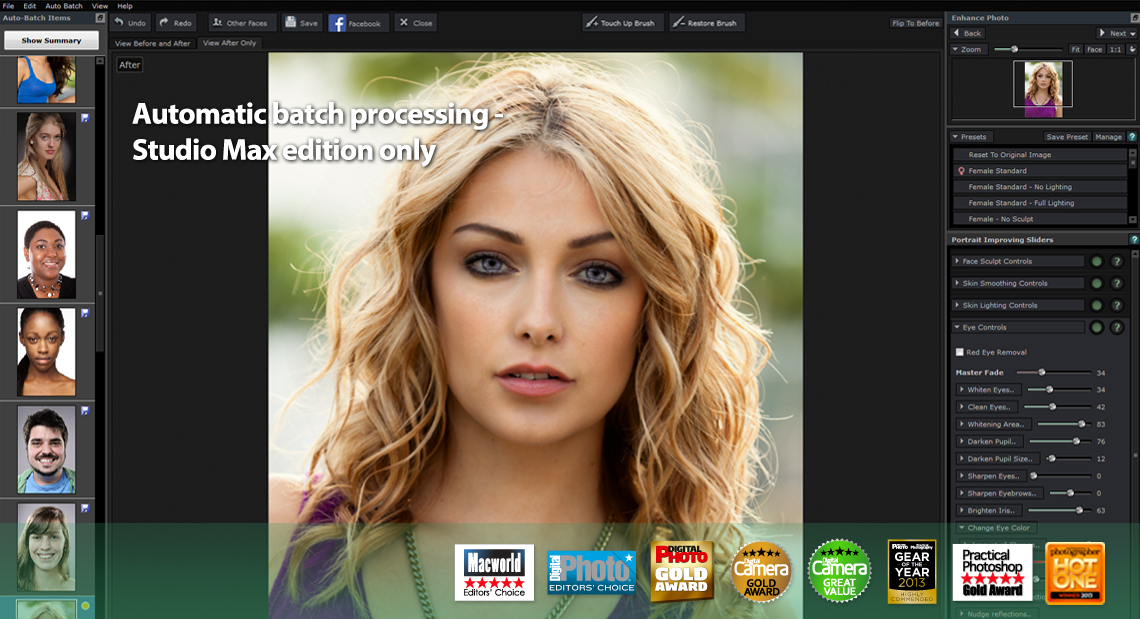

#PORTRAIT RETOUCHING SOFTWARE SKIN#
Dodge and burn is a method of using light and darkness in an image to even out skin tone.
#PORTRAIT RETOUCHING SOFTWARE HOW TO#
Step 3: Dodge and Burnĭodge and burn is a critical step when learning how to Photoshop a portrait.

With the clone tool, you can remove the small hairs from the edge of the nose without blurring the border. The clone tool can also be useful for fixing imperfections within your model’s hair. This can be helpful for removing the peach fuzz around your subject’s nose or chin, for example, without blurring the border of that feature. This tool duplicates a selected area of the photo and allows you to paint those exact pixels in another area. You may also choose to use the clone tool for some fixes. For best results, make the brush just slightly larger than each spot, and use a hard edge to maintain a realistic skin texture and avoid creating too much of a blurred effect. The healing brush takes the texture from a sample area (usually right next to the blemish or imperfection) and blends it with the color and luminosity of wherever you paint it-essentially blurring away the imperfection. Every portrait will contain at least a few imperfections that you want to remove, like blemishes, flyaways, or slight makeup smudges.įirst, use the healing brush tool to clean up areas of the skin that stand out, like pronounced blemishes, red marks, or discoloration. There are several elements to evaluate when cleaning up a portrait, including skin, makeup, and hair. In Adobe Camera Raw, you can make adjustments to RAW images, including exposure, brightness, and saturation. Once you are satisfied with those edits, select Open Image to move into Photoshop and begin the retouching process. On this screen, you can make initial edits to the photo, like adjusting the white balance, bringing in more detail, or correcting the exposure.

If your chosen photo was shot in RAW, your first step will be to open it in Adobe Camera Raw. Shooting in RAW allows you to retain all of that information, which allows you to more easily make changes, like correcting over- or under-exposure, and achieve better quality images. If you don’t shoot in RAW, the camera converts the images to JPEGs before saving to the memory card, which means that some information is compressed and lost. Many photographers choose to shoot in RAW, which means that the camera captures unprocessed, uncompressed photographs. Once you’ve selected an image, use this Photoshop portrait tutorial to learn the basics of retouching a photo from start to finish. Even Photoshop won’t be able to help if you don’t like the basic composition of the picture. Take the time to sort through your photos and select an image that captures the subject well and that you’re generally pleased with. After a photoshoot, you may have hundreds of portraits to choose from. Take the Class 4 Steps to Retouching Portraits Using Adobe Photoshopīefore you begin, it’s important to find the right image to edit.


 0 kommentar(er)
0 kommentar(er)
